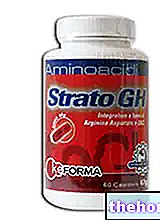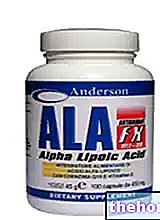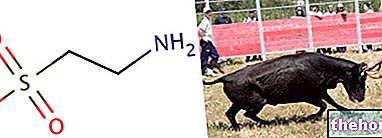In nature, magnesium is found in the form of compounds and magnesium salts, due to its high reactivity.
If we observe the electronic configuration of this chemical element we note the presence of two electrons in the outermost orbital; these electrons are transferred with some ease to other chemical elements that need electrons to complete their external energy level; magnesium deprived of two electrons are positively charged → magnesium ion Mg ++; if instead we observe the electronic configuration of the chlorine we notice the presence of seven electrons in the external orbital; therefore, chlorine tends to greedily attract an electron to itself, in order to complete the octet; in this way, once the missing electron has been acquired, it takes the name of chlorine ion Cl-. Here is explained how magnesium chloride (Mg Cl2) is formed.

After this brief chemical digression, let's briefly see the health characteristics of the various compounds and magnesium salts.
The first characteristic to consider when evaluating a magnesium compound from a health point of view is the quantity of elemental magnesium contained in it; in the case reported above, it is evident that one gram of magnesium chloride contains a certain percentage of elemental chlorine and a certain quantity of elemental magnesium.
Knowing how much elemental magnesium is present in the various compounds and salts allows us to know the amount of product to be taken to cover the daily requirement of this mineral.
(years)
(mg / day)
(mg / day)
(mg / day)
(mg / day)
Since the compounds and magnesium salts are often taken to increase the levels of this mineral inside the body and fill any deficiencies, it would seem logical to move towards the intake of compounds and salts with a higher elemental magnesium content. in reality this aspect is subordinated to the capacity of the human intestine to absorb the magnesium contained in the compound (see in-depth analysis). For this reason, in order to fill specific magnesium deficiencies, it is important to choose the best absorbable sources, while for other applications - such as the antacid or laxative effect - compounds that are not significantly absorbed by the human intestine are preferred.
Generally speaking, the best absorbed magnesium salts are those in which the mineral is bound to organic compounds (gluconate, aspartate, pyruvate, malate, citrate, pidolate, lactate, orotate). However, even magnesium chloride represents a well absorbable source, and - compared to the previous ones - it has the advantage of low cost.On the other hand, the other sources of inorganic magnesium (magnesium oxide, magnesium carbonate, magnesium sulfate) are the object of major criticisms regarding the bioavailability of the magnesium contained in them. Unfortunately, the scientific studies published on the subject are still insufficient to establish with certainty the health applications of the various magnesium compounds, given the presence of a small number of researches with often conflicting results. For this reason the following - the result of the re-reading of scientific articles and university texts - must be considered with due caution.
It is considered a well absorbable magnesium salt; for example, in one study it has been shown to be absorbed 4.5 times better than the inorganic compound Magnesium oxide; the presence of citrate could be useful in case it is necessary to increase the pH of the urine, for example in case of a tendency to uric acid and / or cystine stones
It is known above all for a study that demonstrated its possible efficacy in the treatment of premenstrual syndrome. The presence of pyruglatamic acid seems to give this salt neurosedative effects.
Organic salt ascribed to a better tolerability at the gastrointestinal level and an absorbability comparable with other organic forms; EFSA, the European authority that evaluates food safety, has expressed concerns about the risk that orotic acid promotes the formation of tumors initiated by various known carcinogens
Highly soluble in water, it appears to have excellent absorbability
This magnesium source has the best water solubility of all inorganic forms. Consequently, as various studies have shown, it has a bioavailability similar or in any case slightly lower than the most famous organic salts, with the advantage of a lower cost. On the market, for specific mineral supplements, magnesium chloride is also found in the form of coated tablets to improve gastric tolerability.
Although it is the richest compound in elemental magnesium, it is the one that raises the greatest criticisms on the possibility of absorption by the organism. Poorly soluble in water, it has shown in several studies a poor bioavailability compared to other forms of magnesium. It is presumable. that the fine preparations, which are more soluble in water, are better absorbed than those with a coarser grain.
It is used as an antacid and laxative: it is for example one of the two active ingredients of Maalox. Given the low solubility in water it is generally ascribed to a low bioavailability, although in one study it has been shown to increase urinary levels of magnesium to a comparable extent to some organic salts such as magnesium citrate.
Highly insoluble in water and poorly absorbable by the human body, it is NOT generally used as a source of magnesium in food supplements or fortified foods. Rather, it is commonly used as an antacid
It is used in hospitals for the intramuscular or intravenous administration of magnesium. It is also used as a laxative in high dosages (20 g), often under the name of English salt or Epsom Salt. The bioavailability of the magnesium contained in this salt, when taken orally, is considered low




























